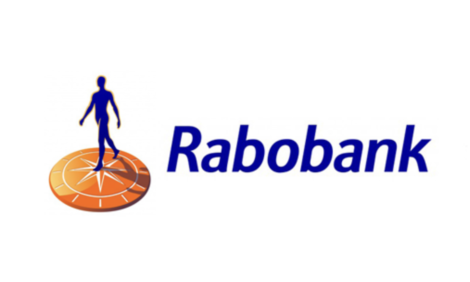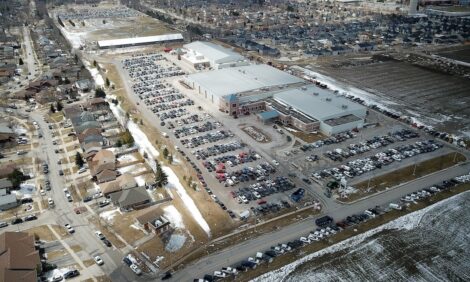



MLA: Weekly Cattle Summary
AUSTRALIA - This report is a collection of weekly cattle price summaries from each Australian territory by Meat & Livestock Australia (MLA).
Queensland
Numbers slip
Rain in places across the supply area reduced numbers at physical markets covered by MLAs NLRS. Despite the return of Longreach into the selling program, overall supply fell by 20 per cent . Mareeba reported increased numbers whilst supply at the Roma store sale fell by half. Mixed quality young cattle continued to dominate the selling pens at most centres, while grown classes of heavy steers, bullocks and cows remain in short supply. A full field of export buyers were on hand at most markets, along with a keen group of feeder operators plus restockers.
Yearling prices firm to slightly dearer
Young lightweight cattle generally sold to stronger competition nevertheless buyers remain selective with a small drop in quality resulting in a vast difference in price. Vealer steers returned to the paddock 9¢ dearer at 171¢ with sales to 190.2¢/kg. Vealer heifers found more demand to average 143¢ with a small sample to local butchers reaching 175¢/kg.
Lightweight yearling steers to restockers averaged 171¢ and D muscle lines 143¢/kg. Medium weights to feed experienced very little change with most at 161¢ with sales to 175.2¢/kg. Heavy weights received stronger demand in places pushed on by restockers with available oats while the largest numbers averaged in the 150¢/kg range. Heavy weight lines returning to improved pastures made to 163.2¢/kg. Yearling heifers generally improved in price with a few medium weights to the trade averaging 158¢ with supplementary fed lines reaching 181.2¢/kg. The lesser quality lines sold in the 130¢/kg range.
Export lines slightly cheaper
A small selection of heavy grown steers to export slaughter averaged 158¢ with supplementary fed lines to 168¢/kg. Bullock values struggled and average prices eased by 3¢ to average 156¢ with sales to 164.2¢/kg. Cows managed to sell within a few cents of the improved rates experienced the previous week. Medium weight 2 scores averaged 89¢ and 3 scores 105¢, while the better quality heavy cows made to an isolated 130.2¢ with most close to 118¢/kg.
Western Australia
Solid pasture growth in southern WA
The unseasonal moisture seen recently in the north of WA has seen solid feed growth normally unseen in the north at this time of year. The southern districts of WA saw further rainfall over the past seven days which has further added to the very solid start to the winter season with very high levels of pasture growth in the traditional cattle rearing areas of the southwest. Calving activity in the south is now in full swing with most herds now having calves on the ground.
Numbers lift
Physical saleyard numbers lifted this week with all three markets recording increased volumes. Muchea saw larger volumes of pastoral drafts, while the majority of cattle seen in saleyards continued to be young store grades.
The volumes of prime trade and heavy weight steer and heifer numbers remained tight, while cow volumes remained fair. The quality of pastoral cattle was lower this week with increased supplies of mixed quality lightweight store drafts recorded. The tight supplies of prime local grass and grain assisted trade weight yearlings continued to record solid local trade and retail demand with the market once again remaining stable.
Prices strengthen
Store yearling quality remained mixed with increased percentages of lightweight categories this week. Southern demand from feeders and restockers continued to be very strong in both steer and heifer classes with most classes enjoying higher prices.
The mixed and generally plain quality seen in young pastoral grades impacted demand with restocker activity remaining very selective in these classes. The cow market in WA remains very strong under consistent and strong demand and competition from the processing sector, despite one order absent from the market this week, with averages for all grades remaining above eastern states prices.
South Australia
Throughput remains firm
While numbers fell at the SA LE to below 240, and with Naracoorte yarding some 304 head less; Mt. Gambier’s increased yarding lifted numbers to similar levels. Millicent will have a monthly market next week as the crop finished yearlings from that area become a scarce commodity. Overall quality has been quite mixed, with the cold nights and mornings starting to affect the finish on most cattle.
The SA LE’s smaller yarding featured a large percentage of supplementary fed yearlings after the previous week’s dearer prices. However, they failed to maintain those levels and sold to easing competition from the usual trade and export buyers. Although feeder orders were present, a lack of well-bred young cattle limited their purchases. The C3 yearling steers were averaging around 30¢/kg cheaper, while the light and medium weight heifers were up to 11¢/kg dearer with the heavyweights generally cheaper.
Naracoorte’s smaller mixed quality yarding sold to selective demand from a small number of SA and Victorian trade and export buyers. Feeder and restocker orders sourced a large number of young cattle suitable to their requirements. A small number of grown steers were dearer, with most beef cows selling at improved levels, except for a small number of D2 medium weights that were cheaper.
Mt. Gambier’s larger yarding featured many secondary lines that led to limited competition from a small number of regular buyers, with feeder and restocker orders active on a very plain quality yarding of young cattle.
Mixed quality draws fluctuating demand
The varying quality yarded this week has only led to fluctuating demand from the operating trade, export, feeder and restocker buyers.
Very limited sales of C2 and B-muscled vealer steers to the trade ranged from 155¢ for the C2’s, up to 216¢ for single B2 lightweights. Feeders and restockers sourced mostly C1 and C2 light and medium weight steers between 116c¢ and 183¢/kg, at mainly dearer levels. Small numbers of vealer heifers to the trade sold mainly from 144¢ to 210¢, with C-muscled sales averaging 30¢/kg less. Medium and heavy C3 yearling steers sold from 150¢ to 217¢, or 14¢ to 25¢/kg less. Yearling heifer C3 medium weights were 9c dearer, with the heavyweights 14¢ cheaper, as most sold from 137¢ to 204¢/kg. Increased lines of C1 and C2 mainly medium weight heifers to feeder and restocker activity were dearer as they sold from 128¢ to 158¢/kg.
Grown steer C2 and C3 sales ranged from 165¢ to 196¢ at prices unchanged to 14¢/kg dearer with the medium weight 2 scores faring best. Most 2 to 6 score beef cows sold from 80¢ to 130¢, with D2 sales 10¢ cheaper and most others 3¢ to 9¢/kg dearer, or 170¢ to 235¢/kg cwt.
New South Wales
Consignments lift
Consignments lifted 25 per cent as some selling centres nearly doubled their numbers with others seeing similar to marginally larger percentages. The early weekly markets of Wagga and CTLX Carcoar gained 22 per cent to 31 per cent , respectively, while the Northern markets of Armidale together with the Hunter sales nearly doubled their consignments. Surprisingly Dubbo, Forbes and Inverell maintained low numbers as Gunnedah gained 35 per cent , however off a low base last week.
Quality continues to be mixed
The majority of markets reported mixed quality offerings with some lifting their quality from fair to good. Younger cattle again dominated markets as the majority of older pens fell into the cow categories. Vealer steers and heifers were represented by similar numbers with 74 per cent steers and only 37 per cent of the heifer portion selling to restocker and feeder orders.
Yearling steers far out-numbered yearling heifers with again large percentages of both categories selling to restocker and lot feeders. Prime conditioned heavy weight steers and bullocks along with grown heifers continue to be limited in supply as large numbers are reported to be selling over-the-hook. Cow numbers lifted 19 per cent week-on-week to a total of 3,139 offered.
Prices sold to mixed trends
Vealer steers and heifers to restocker and feeder orders sold 2¢ either side of firm as the prime conditioned drafts to butcher orders remained firm to a shade dearer. Medium weight (200kg plus) vealer steers returning to the paddock averaged 158¢ as the best topped at 190¢/kg.
The same weighted heifer portion to the trade reached 170¢ with most selling around the 140¢/kg range. Yearling steers and heifers to restockers and feed trended 3¢ to 8¢/kg dearer as those suitable for processor and butcher sales remained close enough to firm.
Prime heavy weight grown steers and bullocks sold 5¢ to 7¢ dearer as the best topped at 187¢ with most sales around the 164¢ to 177¢/kg range. Cows trended dearer to improve 4¢ to 7¢ as the plainer 2 scores averaged 83¢, while the better covered 3 and 4 scores ranged from 70¢ to 117¢/kg.
TheCattleSite News Desk


